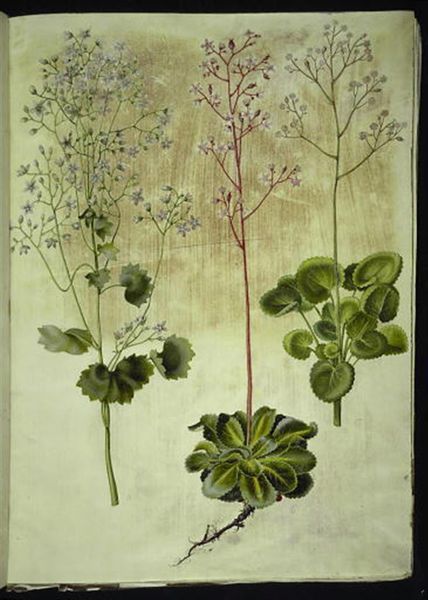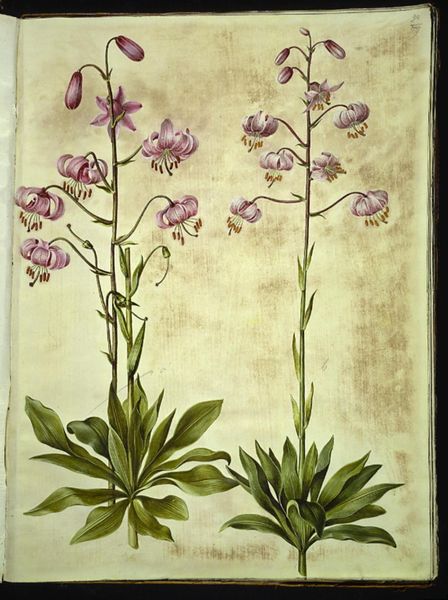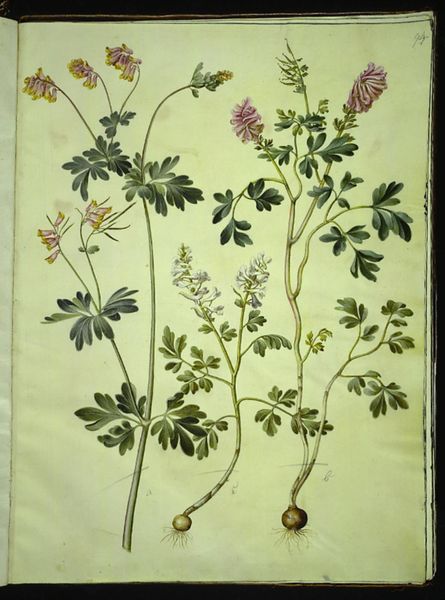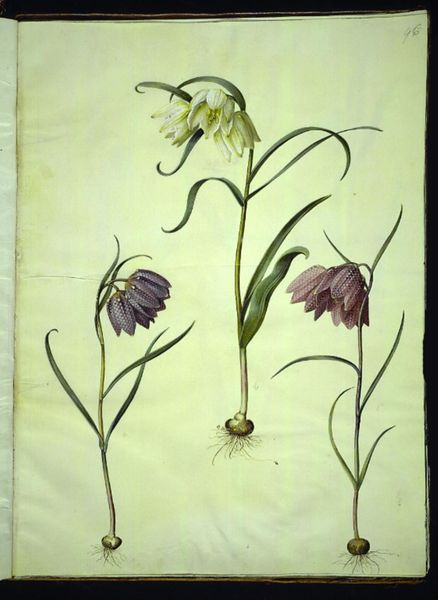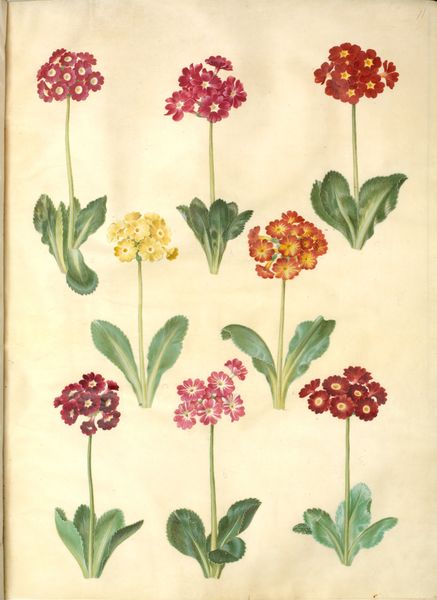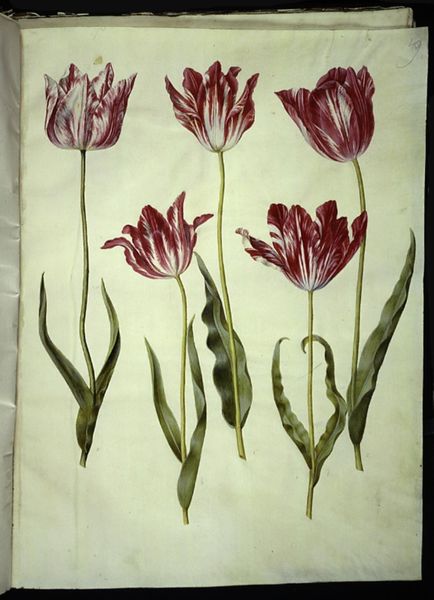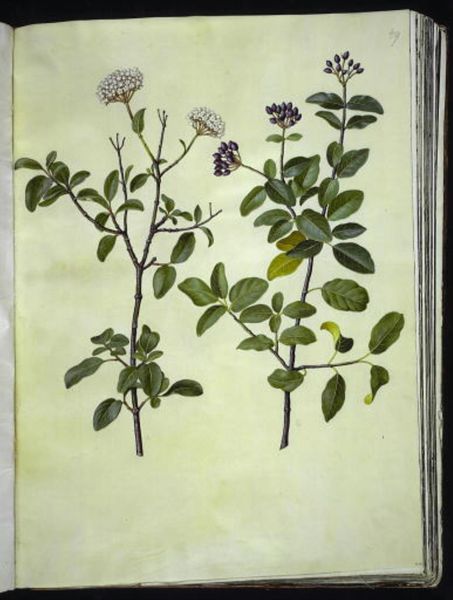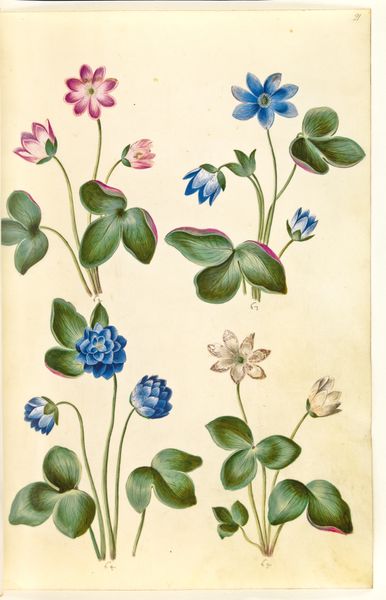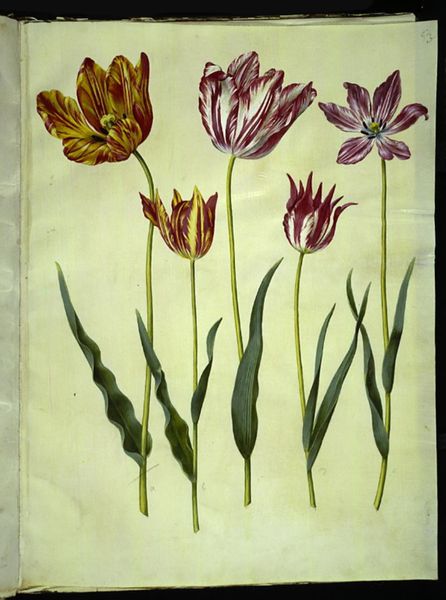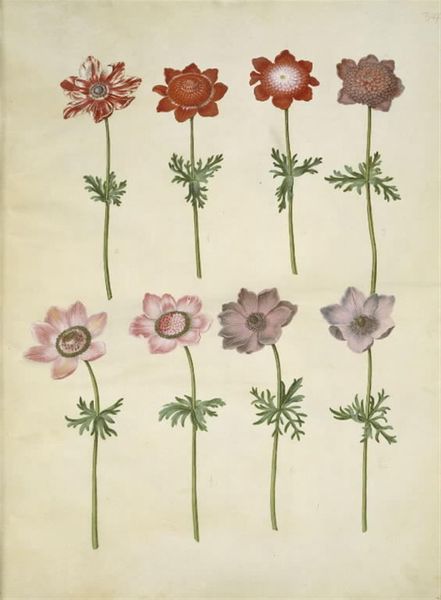
Cyclamen hederifolium (vedbendbladet alpeviol); Cyclamen purpurascens (ægte alpeviol) 1649 - 1659
0:00
0:00
drawing, painting, gouache, paper, watercolor
#
drawing
#
water colours
#
baroque
#
painting
#
gouache
#
paper
#
watercolor
#
coloured pencil
#
botanical art
#
watercolor
Dimensions: 505 mm (height) x 385 mm (width) (bladmaal)
Editor: This is "Cyclamen hederifolium; Cyclamen purpurascens" created between 1649 and 1659 by Hans Simon Holtzbecker, using watercolors, gouache, and colored pencil on paper. The arrangement of the six plants on the page makes me wonder if it was originally meant to illustrate a botanical text. What can you tell me about how art like this functioned at that time? Curator: That’s a perceptive observation. Botanical illustrations like these, especially during the Baroque period, were intricately linked with scientific exploration and burgeoning colonial enterprises. These detailed studies were often commissioned to document newly discovered species, contributing to the broader project of cataloging and controlling the natural world. Editor: So it’s more than just a pretty picture? It’s also about power? Curator: Precisely. The act of depicting, naming, and classifying these plants wasn’t neutral. It was embedded within a complex web of power relations. These images served as crucial visual tools for disseminating knowledge, but also as a form of asserting dominion over newly accessed territories and their resources. Consider how the plants themselves become symbolic of this control. Editor: That definitely shifts my perspective. It’s almost like the artist is acting as a visual agent of the state, cataloging its resources. It’s making me rethink how I see this art, now appreciating it with a more critical eye. Curator: Indeed. And recognizing the politics inherent in even the seemingly objective botanical illustration challenges us to consider the social and political context shaping all visual representation.
Comments
No comments
Be the first to comment and join the conversation on the ultimate creative platform.

